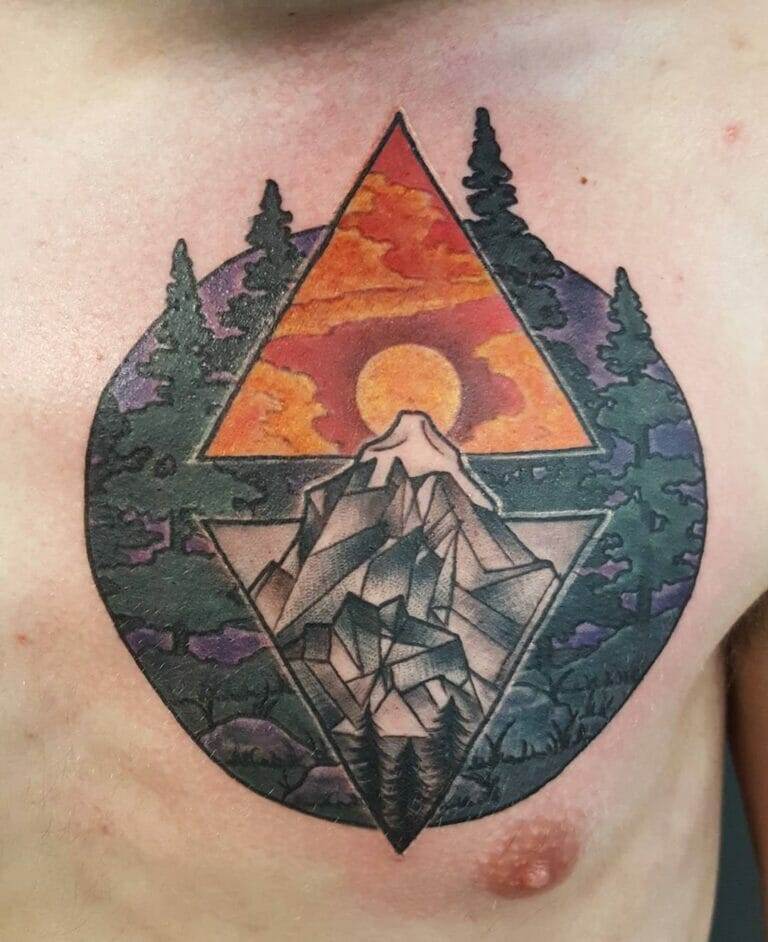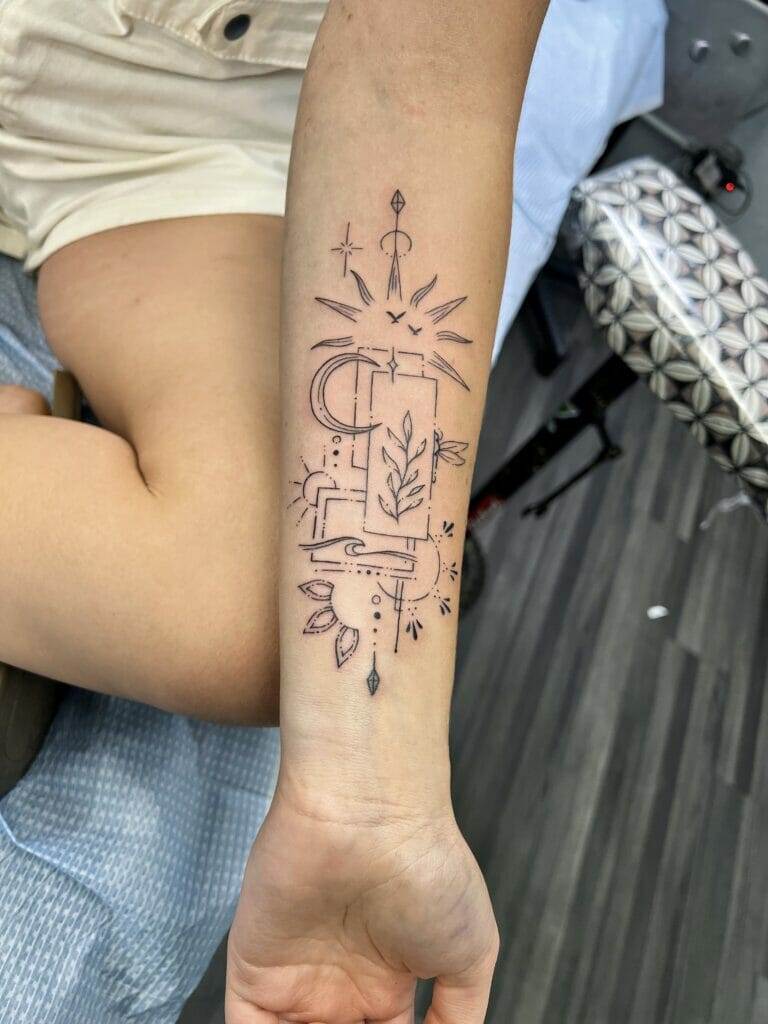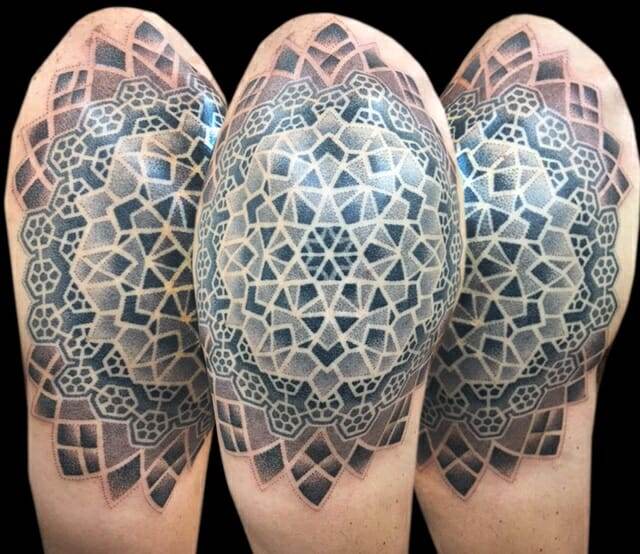
Sacred geometry has emerged as a captivating theme in the world of tattoo art, drawing individuals who seek deeper meaning and connection through their body ink. This ancient practice intertwines mathematical principles with spiritual significance, creating designs that resonate on multiple levels. Tattoos inspired by sacred geometry often feature intricate patterns and shapes that not only serve as aesthetic embellishments but also embody profound philosophical concepts.
As more people explore the significance behind their tattoos, sacred geometry offers a unique avenue for self-expression, inviting wearers to connect with the universe and their inner selves. The allure of sacred geometry lies in its ability to transcend mere decoration. Each design is imbued with symbolism, representing universal truths and the interconnectedness of all things.
From the Fibonacci sequence to the Flower of Life, these patterns evoke a sense of harmony and balance, appealing to those who appreciate both art and spirituality. As tattoo enthusiasts increasingly seek designs that reflect their beliefs and values, sacred geometry stands out as a powerful choice, merging beauty with meaning in a way that resonates deeply with the human experience.

Key Takeaways
- Sacred geometry is a popular design choice for tattoos, drawing on ancient symbols and meanings.
- The history of sacred geometry dates back to ancient civilizations, with roots in mathematics, art, and spirituality.
- Common sacred geometry symbols include the Flower of Life, Metatron’s Cube, and the Sri Yantra, each with its own unique significance.
- Sacred geometry tattoos are often used to represent balance, harmony, and interconnectedness in the design and placement of the tattoo.
- Sacred geometry tattoos can be found in various cultures around the world, each with their own interpretations and traditions.
History and Origins of Sacred Geometry
The roots of sacred geometry can be traced back to ancient civilizations, where it was revered as a means of understanding the cosmos and the natural world. Cultures such as the Egyptians, Greeks, and Indians recognized the significance of geometric shapes and patterns in their architecture, art, and spiritual practices. The Greeks, particularly, were instrumental in formalizing the study of geometry, with philosophers like Pythagoras emphasizing its mystical properties.
They believed that numbers and shapes held the key to understanding the universe’s underlying order, a concept that continues to influence modern interpretations of sacred geometry. In addition to its mathematical foundations, sacred geometry has been intertwined with various religious and spiritual traditions throughout history. Many ancient temples and monuments were constructed using these principles, reflecting a belief in the divine order of creation.
For instance, the Great Pyramid of Giza is not only an architectural marvel but also a representation of cosmic alignment and spiritual significance. As these ideas spread across cultures, sacred geometry became a universal language, bridging gaps between science, spirituality, and art.
Common Sacred Geometry Symbols and Their Meanings
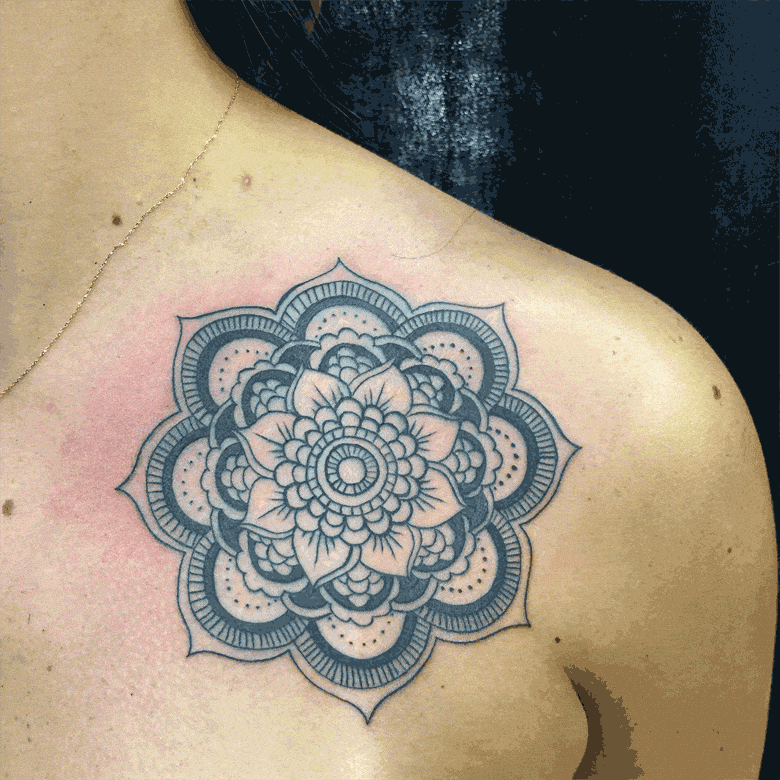
Among the myriad symbols associated with sacred geometry, several stand out for their widespread recognition and profound meanings. The Flower of Life is perhaps one of the most iconic symbols, consisting of multiple overlapping circles that create a flower-like pattern. This design represents the cycle of creation and the interconnectedness of all living things.
It serves as a reminder that everything in existence is part of a greater whole, making it a popular choice for those seeking unity and harmony in their lives. Another significant symbol is the Metatron’s Cube, which encompasses various geometric shapes within a larger framework. This symbol is often associated with divine protection and balance, embodying the idea that all forms of matter originate from a single source.
The intricate design invites contemplation on the nature of reality and our place within it. Additionally, the Sri Yantra is revered in Hinduism as a representation of the cosmos and the divine feminine energy. Its complex interlocking triangles symbolize the balance between masculine and feminine forces, making it a powerful emblem for those exploring their spiritual journey.
The Use of Sacred Geometry in Tattoo Design
Incorporating sacred geometry into tattoo design allows for a unique blend of artistry and symbolism. Artists often utilize these geometric patterns to create visually striking tattoos that resonate with personal beliefs or experiences. The precision required to render these designs adds an element of craftsmanship that appeals to both tattoo enthusiasts and artists alike.
Whether rendered in bold black ink or vibrant colors, sacred geometry tattoos can be tailored to suit individual preferences while maintaining their inherent meanings. Moreover, sacred geometry tattoos often serve as personal talismans or reminders of one’s spiritual journey. Many individuals choose these designs to signify transformation, growth, or a connection to higher consciousness.
The act of getting a tattoo becomes a ritualistic experience, allowing wearers to embody their intentions physically. As such, these tattoos can foster a sense of empowerment and self-awareness, encouraging individuals to embrace their unique paths while remaining connected to universal truths.
Sacred Geometry Tattoos in Different Cultures
The appreciation for sacred geometry transcends cultural boundaries, with various societies incorporating these symbols into their artistic expressions. In Indigenous cultures, geometric patterns often appear in traditional art forms, reflecting a deep connection to nature and spirituality. For instance, Native American tribes frequently use geometric designs in pottery and textiles to convey stories or represent natural elements.
These patterns serve as a testament to their understanding of the interconnectedness of life. In Eastern cultures, particularly within Buddhism and Hinduism, sacred geometry plays a significant role in spiritual practices. Mandalas—intricate circular designs—are used as tools for meditation and reflection.
These patterns often incorporate elements of sacred geometry, symbolizing the universe’s wholeness and the journey toward enlightenment. As tattoo culture continues to evolve globally, many individuals draw inspiration from these rich traditions, infusing their body art with cultural significance while honoring the wisdom embedded within sacred geometry.
The Spiritual and Philosophical Significance of Sacred Geometry Tattoos
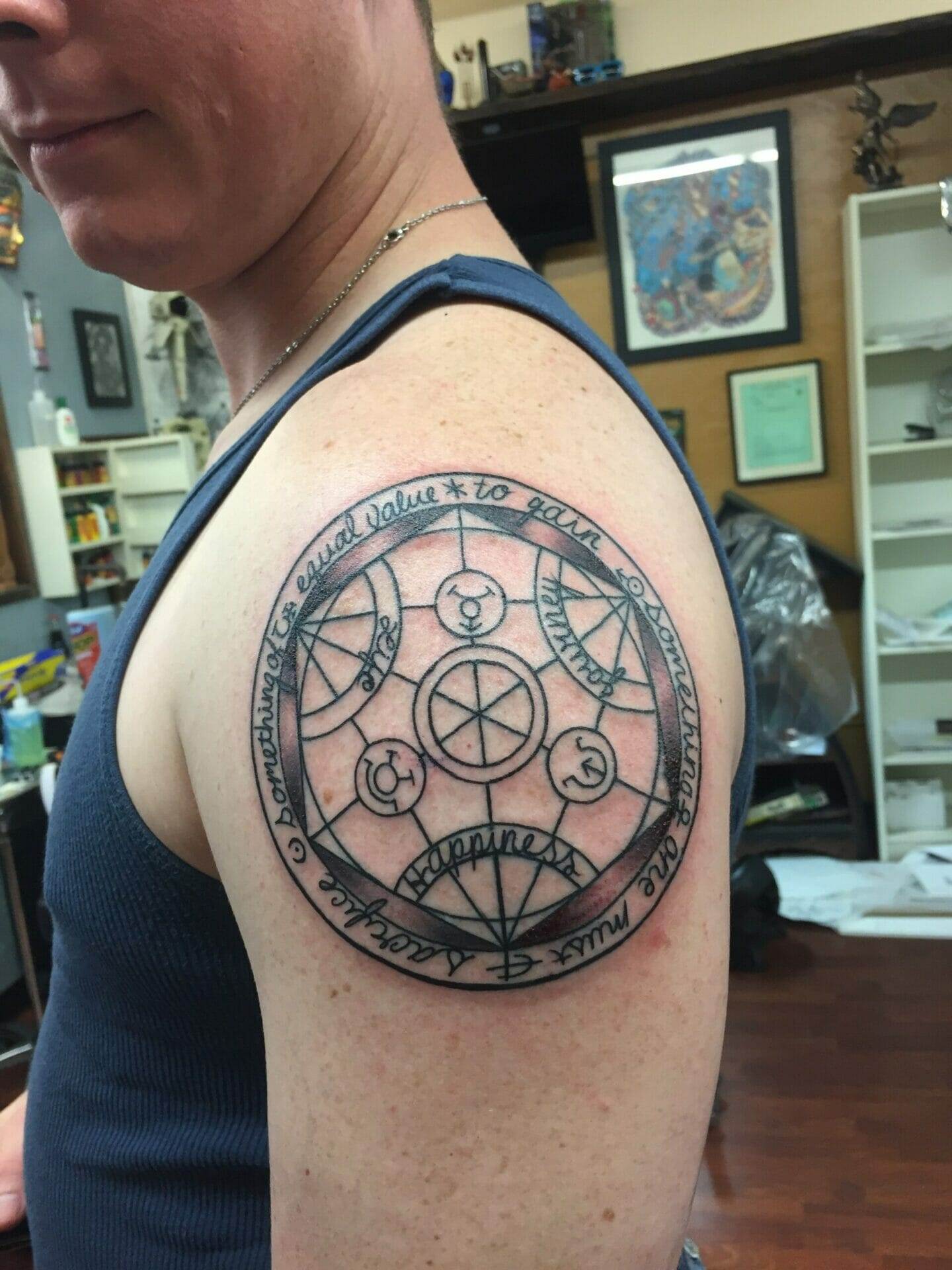
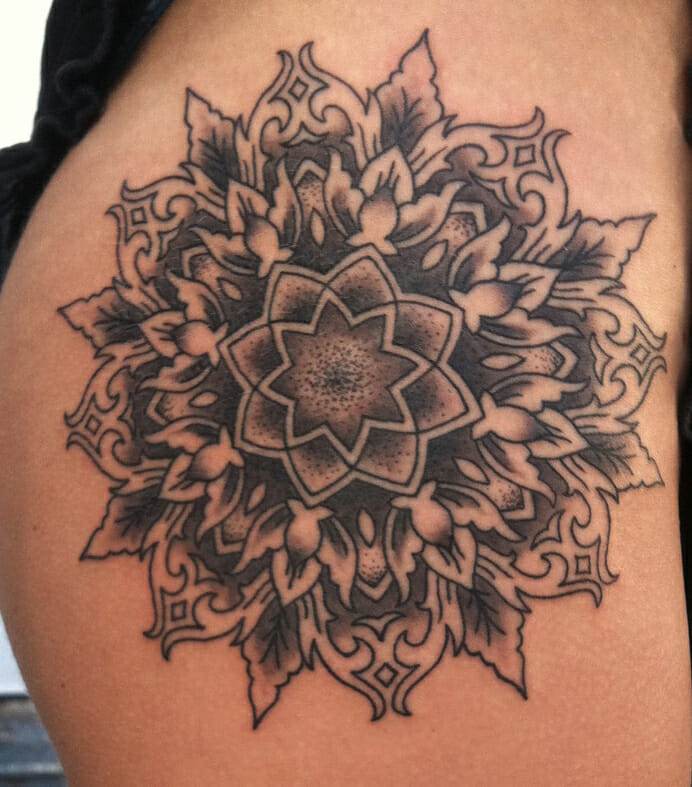
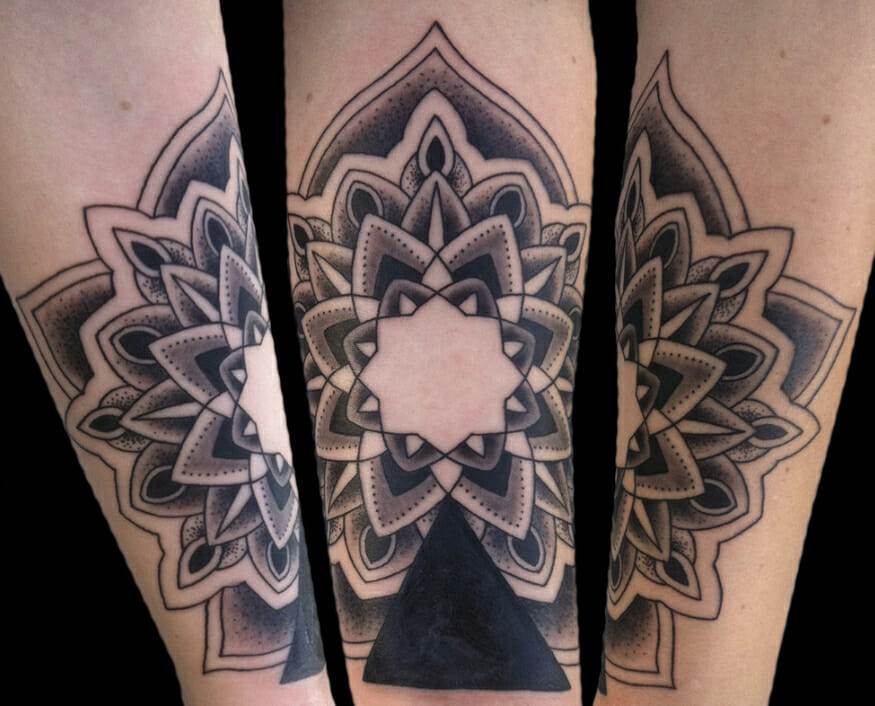
The spiritual implications of sacred geometry tattoos extend beyond mere aesthetics; they invite contemplation on existence itself. Many wearers view these tattoos as expressions of their beliefs about life, death, and everything in between. The intricate designs often serve as reminders of one’s connection to the universe and the cyclical nature of existence.
By adorning their bodies with these symbols, individuals may find solace in knowing they are part of something greater than themselves. Philosophically, sacred geometry challenges individuals to explore concepts such as balance, harmony, and unity. The patterns encourage introspection about one’s place in the world and relationships with others.
For many, these tattoos become catalysts for personal growth and transformation, prompting them to seek deeper understanding and connection with themselves and their surroundings. In this way, sacred geometry tattoos transcend superficiality; they become powerful symbols of one’s journey toward enlightenment.
Choosing a Sacred Geometry Tattoo Design
Selecting a sacred geometry tattoo design involves careful consideration and personal reflection. Individuals are encouraged to explore various symbols and their meanings before committing to a specific design. Understanding what each symbol represents can help ensure that the chosen tattoo aligns with one’s values and beliefs.
Whether seeking unity through the Flower of Life or balance through Metatron’s Cube, taking time to research can lead to a more meaningful choice. Additionally, collaborating with a skilled tattoo artist who understands sacred geometry can enhance the overall experience. Artists can provide insights into how different designs can be adapted or personalized to reflect individual stories or intentions.
This collaborative process allows for creativity while ensuring that the final design resonates deeply with the wearer. Ultimately, choosing a sacred geometry tattoo should be an empowering experience that reflects one’s unique journey through life.
Conclusion and Final Thoughts on Sacred Geometry Tattoos
Sacred geometry tattoos represent a harmonious blend of art, spirituality, and personal expression. As individuals seek deeper connections with themselves and the universe around them, these designs offer profound meanings that resonate on multiple levels. From their historical roots to their contemporary significance across cultures, sacred geometry continues to inspire those who choose to adorn their bodies with its intricate patterns.
In an age where self-expression is celebrated, sacred geometry tattoos stand out as powerful symbols that invite contemplation on existence itself. They serve not only as beautiful adornments but also as reminders of our interconnectedness with all living things. As more people embrace these designs for their aesthetic appeal and spiritual significance, sacred geometry will undoubtedly continue to thrive within the tattoo community—an enduring testament to humanity’s quest for meaning in an ever-evolving world.
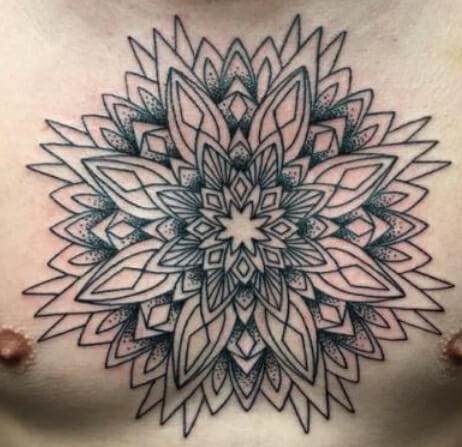
FAQs
What is sacred geometry in tattoo design?
Sacred geometry in tattoo design refers to the use of geometric shapes and patterns that hold spiritual or symbolic significance in various cultures and belief systems. These designs are often based on mathematical principles and are believed to represent the underlying order of the universe.
What are some common sacred geometric symbols used in tattoo designs?
Some common sacred geometric symbols used in tattoo designs include the Flower of Life, Metatron’s Cube, the Seed of Life, the Sri Yantra, the Vesica Piscis, and the Fibonacci spiral. These symbols are often used to represent concepts such as creation, balance, harmony, and interconnectedness.
What is the meaning and symbolism behind sacred geometry tattoos?
The meaning and symbolism behind sacred geometry tattoos can vary depending on the specific symbol used. However, in general, these tattoos are often associated with spiritual enlightenment, cosmic order, and the interconnectedness of all things. They can also represent balance, harmony, and the cyclical nature of life.
Are there specific cultural or religious associations with sacred geometry tattoos?
Yes, sacred geometry tattoos often have specific cultural or religious associations. For example, the Flower of Life is associated with various ancient cultures, including Egyptian and Greek, and is believed to represent the fundamental forms of space and time. The Sri Yantra is a sacred symbol in Hinduism and is used for meditation and spiritual growth.
What should I consider before getting a sacred geometry tattoo?
Before getting a sacred geometry tattoo, it’s important to research the specific symbol and its cultural or religious significance. It’s also important to find a skilled tattoo artist who has experience with sacred geometry designs, as these tattoos often require precision and attention to detail. Additionally, consider the placement of the tattoo and how it aligns with your own spiritual beliefs and values.

